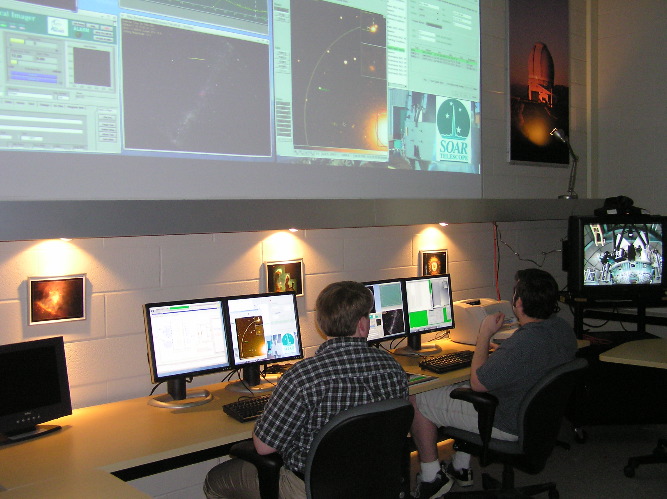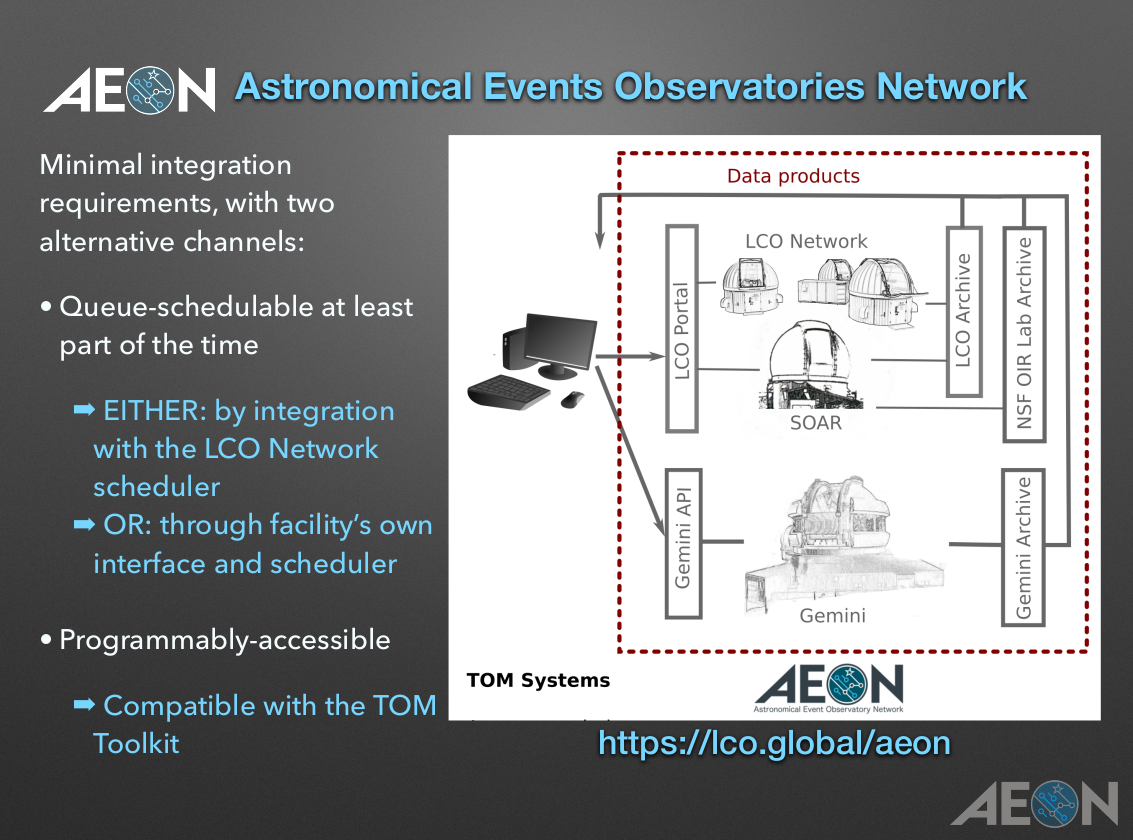Observing with SOAR
Remote Observing and access: We have implemented the Keeper safe connection manager as our remote observing tool. A User Guide can be found at this link. Because of the 2023 cyber-incident, many forms and reports are not fully functional. Until further notice, contact the appropriate support scientists to verify setup requests. In general, however, e-mailing setup requirements, including coordinate files, to "team-soar AT noirlab.edu" is a satisfactory substitute.
Time change in Chile. Chile local time is currently Summer Time (UT-4h). Chile will return to Summer Time the the night of September 6, 2025 (UT-3h). Chilean time changes are the first Saturday of April and September under current legislation.
This page aims to be the main resource for current and prospective users of the Southern Astrophysical Research (SOAR) Telescope. From here or the menu on the side bar you can access pretty much everything you might need to propose for, or to observe with the telescope and its instruments, monitor weather conditions, and other useful tasks.
Information from the most recent Call for Proposals
Time in La Serena:
Observing Modes at SOAR
SOAR offers three observing modes: remote, on-site (but see note below), and the AEON queue.
- Most users do remote observing, either from their home/office or from a dedicated observing room at their institution (The Michigan State University Remote Observing Room, is shown at left).
- Observers can also run their program on-site (the SOAR Control Room is shown in the middle image). Note - we have resumed permission for visiting observers, however there may be capacity restrictions.
- On selected nights throughout each semester SOAR now runs a highly automated queue within the Astronomical Event Observatory Network (AEON). This mode is ideally suited for Time Domain Astronomy, but also regular programs that use specific, well defined setups. Both Goodman and TSpec are being offered in this mode.
In the table above and the menu on the right, you will find the tools you need for preparing your science proposal and then carrying out your program.
Tracking at Non-Sidereal Rates with SOAR
The SOAR telescope has the ability to track at non-sidereal rates, ideal for observing fast-moving Solar System targets. The maximum non-sidereal rates at which the telescope can track are determined by low-level software. The maximum rate in declination is ±2700 arcsec/hour and the maximum rate in right ascension is ±180 seconds of RA/hour. This specification for the RA rate limit means that the maximum RA rate in seconds of arc/hour on the sky is 2700*cos(declination). Note - at present, the guiders do not support non-sidereal targets, so observations must rely on the telescope tracking.
For information on how to create target lists for Solar System objects go to this page.
Updated on June 17, 2025, 5:15 am


